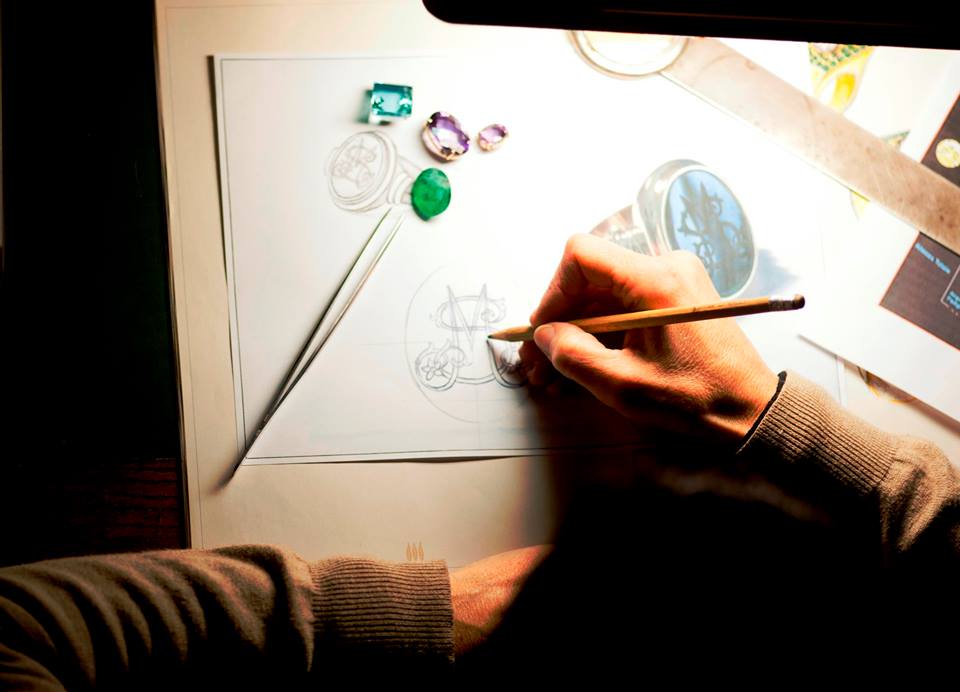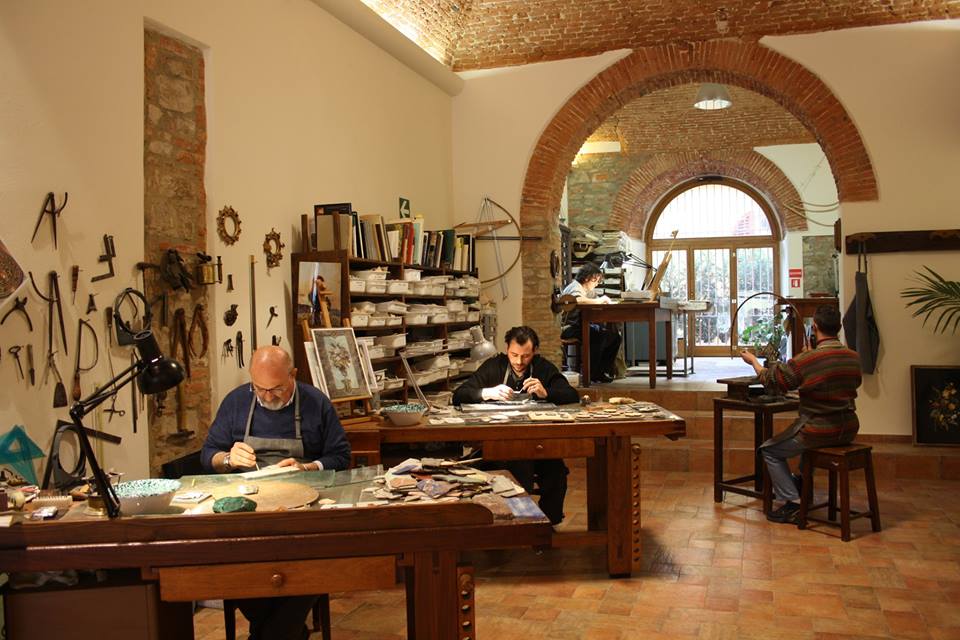
Tour of Florence Artisans
The Tour of Florence Artisans will introduce you to the most vibrant life of our city. We’ll get to know the workshops of mosaic makers, goldsmiths, shoemakers, etc. There’s a strong link between the past history of Florence and its present life: the people. In the Middle Ages and the Renaissance everybody knew Florence for its skilled craftsmen. They were weavers, shoemakers, silk embroiderers, wool workers, leather tanners. All this history made up of people is still reflected in the name of some streets. Actually, we have Via dell’Arte della Lana, Corso Tintori, Via Pellicceria,… These are all names of professions: wool workers, dyers, fur makers. Taking the Tour of the Artisans of Florence we can discover this more popular face of the city (interwoven with the history of the city itself).
Tour of Florence Artisans: brass engraving
There’s Giuliano, curved over his work with his reading glasses on, shakes his head when I ask: “and what will happen to your bottega (workshop) when you want to retire? Who will continue all this marvel?”. He says: “It will finish with me unfortunately, because there’s nobody who wants to do this job anymore, it’s complicated”. It’s so sad, I think, years of experience and tradition will be lost. In addition, we will never see his beautiful pill holders made and decorated by him with great precision and passion. Giuliano has been working in his brass engraving workshop in Santo Spirito for 50 years. He learned from his maestro this delicate art when he was a little boy. Now he sells his products mainly to the United States. They are little objects in silver plated brass, like brooches, pins, pill holders, Christmas decorations, etc. He’s proud to show us a picture of Bill Clinton buying one of his post-it cases in Philadelphia.
Tour of Florence Artisans: goldsmiths
Then there’s Daniela, a perfect host who shows us the marvels of her jewelry laboratory near Ponte Vecchio. She’s the owner of Nerdi Goldsmiths & Engravers with Luca, the goldsmith. “We have been here since the end of the Second World War. We have seen the reconstruction of the city after the dynamite of the Nazis. We were here for the terrible flood of 1966 and the Georgofili bomb of 1993 (a mafia attack at the Uffizi Gallery). Nevertheless, we have survived all this. We do the jewels following the Florentine tradition, we haven’t changed a single thing. We design, we produce, we make our clients’ dreams come true. In fact, they tell us what they have in mind, we give a shape to the idea and we make the jewel for them, on commission. It’s what the Medici family did with great goldsmiths, like Cellini or Ghiberti”.
Hand-made shoes in Florence
The young Leonardo is 25 years old, works at Mannina and shows a great passion for shoe-making, greets us at the shoe workshop. He’s making a pair of shoes that will go to Japan. During Christmas time they were very busy, with many deliveries to ship through out the world. “The shoes start from the design of the foot, we make it only once, so we keep it in case the client want to do another pair in the future. Then you have to decide the kind of leather and color, together with the model. Our feet are different, what’s good for me cannot also be good for you, and our painful calluses are caused by bad shoes”. Suddenly Salvatore Ferragamo’s autobiography comes to my mind.

Mosaic and stone cutting
One of the many talents of the Florentine artisans is the stone mosaic. Florence is the place where an amazing craftsmanship saw its birth in the XVI century thanks to the Medici family: the commesso fiorentino. It’s a very ancient job to transform the mosaic made up of tesserae into something more refined. Renzo Scarpelli was the founder of Scarpelli Mosaici and he is one of the very few masters of this art. In fact, it requires a strong attitude to painting and design, a profound knowledge of materials. Also, a longsightedness to see the final work from the very first stage. It’s a “puzzle” of colorful stones, made following the pattern of the design, so carefully that you don’t see the union of thousands of pieces. Renzo’s son, Leonardo Scarpelli, looks for the stones on the river banks, in the country or in the mountains. Then he cuts them into big slices. Consequently, the big slices are cut into many small pieces using a cherry bow and a clamp. This is the same way the stone cutters did for centuries. Nothing has changed. The results are spectacular masterpieces, each is a unique piece. Obviously, it’s impossible to replicate them: paintings, table tops, little jewels. Every piece a different story. Leonardo and his sister Catia love their creations so much that some of them are not even on sale. A piece of his heart cannot be sold.
Artisans as descendants of ancient Guilds
This is an exciting way to get to know Florence and its craftsmen’s workshops, talking to the Maestros to discover their secrets. These people are the pride of Florence, they are the descendants of the ancient Arti e Corporazioni. These were Guilds of Florence established in the Middle Ages to develop the trade and the economy of the city. The magic of creation is still alive in the modern artisans workshops. Should we call them artisans or artists?
